How do cats see our world?
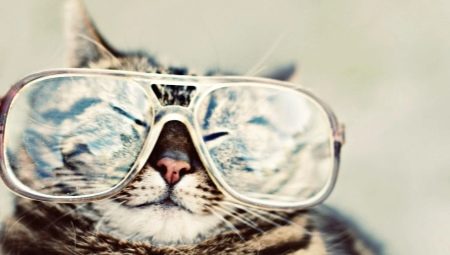
Cats are believed to have special eyesight. They are credited with seeing the other world and many magical properties. To dispel all doubts, let's take a closer look at this issue and study how cats see our world, how they perceive a person and whether they distinguish colors.
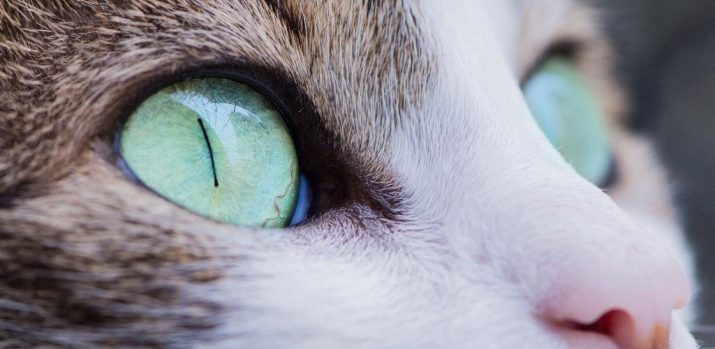
Features of the structure of the eyes
Feline vision differs from the human eye in structure, the number of cones and tubes. In general, in humans and cats, the structure of the eye has many similarities. The top layer is the cornea - a light refractive barrier. Under it is the choroid, which forms the iris and pupil in front. The iris is the muscle ring, and the pupil is the opening in it. A mineral glassy lens is located behind the iris. The inner lining is represented by the light-sensitive retina, consisting of rod cells that perceive movement, as well as cones that are responsible for the perception of color. From the back side, nerve endings approach the inner shell of the eye. There is a clear, thickish liquid inside the eye.
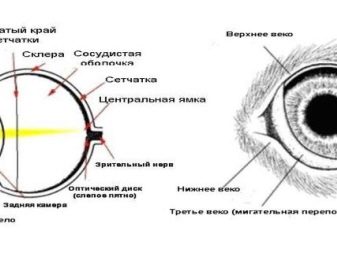

The type of vision in cats is binocular, due to which animals are able to estimate the distance to the object. They determine the location of a specific object through the difference in the location of the picture on the retinas of the left and right eyes. However, the structure of a cat's eyes has the following features:
- the cornea in the cat's eye is larger and occupies almost the entire surface of the open part;
- the shape of the cat's pupil is elongated; this feature explains the possibility of narrowing and limiting the volume of incoming light;
- between the retina and the choroid there is a tapetum (a reflective membrane similar to fish scales), due to which part of the rays is reflected to the retina;
- the cat's eye does not have a blind zone, in this place there is a special disc with cones;
- there are much more rods near the eye, which explains the animal's ability to see in the dark.
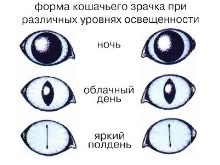

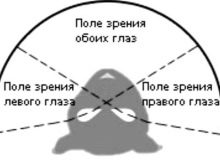
An interesting feature of the structure of the cat's eye is the multiple light reflection. It is due to this that the eyes of cats glow in the dark, as well as in cases when, for example, a lamp light is directed at animals. However, who would have thought that cats in daylight see worse? This fact is explained by high light sensitivity. To see an object better, a cat narrows its pupils, focusing on a specific object, while a vertical pupil helps it to protect its eyes from ultraviolet radiation.
The pictures received by each eye merge into one, but the clarity of vision in the light is worse than in the dark.
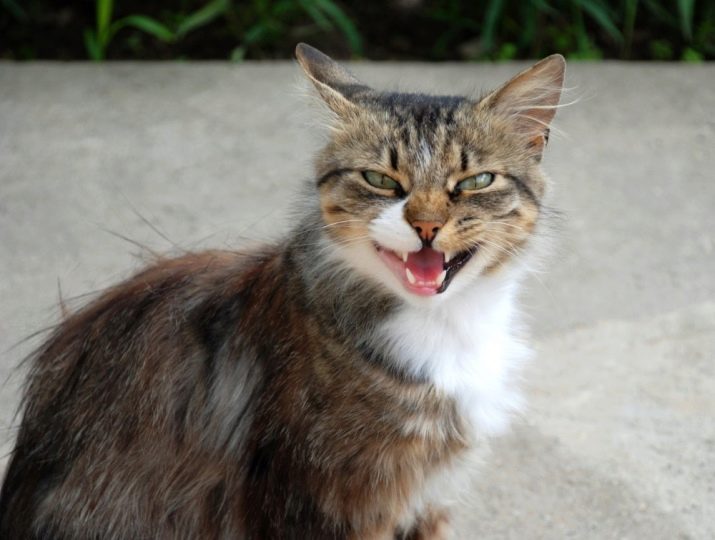
Color perception
The popular belief that cats see the world in black and white is not true. In fact, they are able to distinguish some shades, although the degree of their saturation is not the same as a person sees it. If we can distinguish a lot of color shades, then cats don't have that many.... Moreover, almost all of them are less saturated and, most likely, even faded, shrouded in a misty haze.
They distinguish well between shades of blue and green, see gray and smoky tones. These colors are not accidental, due to photoreceptors, cats have better night vision, therefore, cats do not perceive red, bright orange and yellow tones. Rather, due to the smaller number of cones, the colors will approach the tones characteristic of acute night vision. For example, a yellow cat will see a color as greenish with yellow and gray undertones, but the color will be warm.
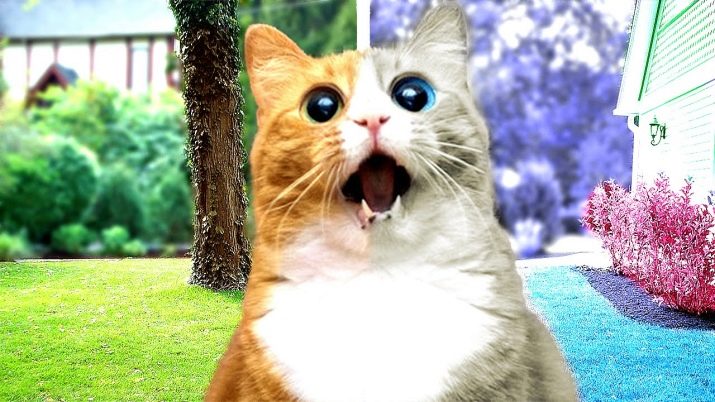
Violet is also included in the palette of color vision of the animal. His pet sees not too distorted. It is noteworthy that cats perceive colors of cold temperatures better. However, the range of distinguishable tones directly depends on the degree of illumination, for example, in the evening light, the shades may seem different, so the animal may confuse the same orange with red.
In general, cats have not three, but two types of photoreceptor cones, which are responsible for color daytime vision. It is believed that they are able to distinguish up to 25 shades of gray, but with a color palette, the situation is worse than with a neutral one. This gradation is explained by the number of cones responsible for the perception of a particular color.
For any color that an animal sees, its own group of cells is responsible.
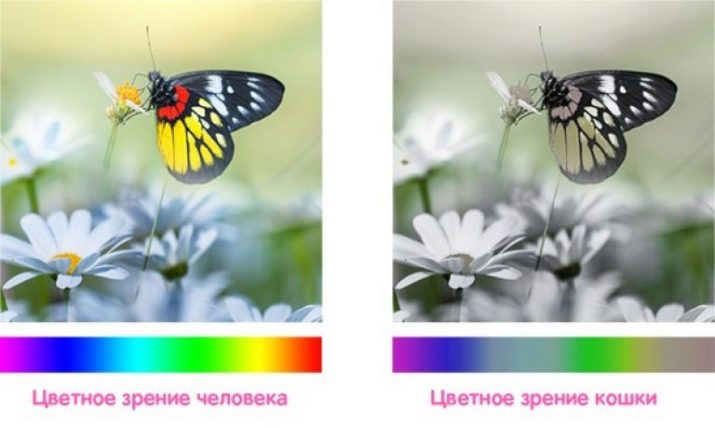
The percentage of each class of cones is different from that of a human. That is why the photosensitivity to the components of the solar spectrum is different. However, due to the presence of tapetum, activity in daylight or artificial light is difficult. Moreover, the tapetum itself does not emit light particles, it only reflects those that are.
In general, in addition to gray, a cat sees 6 basic colors (blue, white, yellowish, green, purple, black), and the most clearly of them they perceive blue and purple. Red, brown they merge into one color, which has a grayish impurity. They see him as if the degree of brightness was reduced in a graphics editor, squeezing out the color in favor of neutral colors.
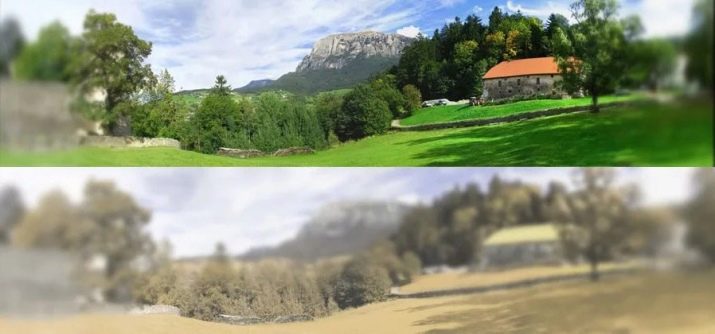
How do they see in the dark?
You can often hear the phrase that cats can see perfectly in complete darkness. This statement is incorrect: for the visual perception of surrounding objects at night, cat's eyes need at least a small luminous flux. Their visual acuity is much better when compared with a person, but also a considerable part of the orientation in space is explained by the sensitivity of vibrissae, which provide information due to air vibrations. Remarkable is the fact that the cat feels the slightest vibration coming from the paws of the mouse. To understand in which direction the prey ran, it does not at all need to see several times better than a person. It is enough just to touch the ground with vibrissae.
If we compare the vision in the dark of a person and a cat, then the gain will be 6: 1 in favor of the animal or even more due to the high concentration of photoreceptors. At dusk, the pupils of the animal dilate, which makes it possible to capture the smallest particles of light. In relation to the body, the eyes of animals are quite large, therefore cats are often called the most big-eyed pets. In the dark, the pupils seem bottomless, light is absorbed and reflected from the tapetum, after which it returns to the nerve endings.
At the same time, it seems to a person that the cat's eyes are glowing. In the dark, the pupils are dilated to absorb more light.

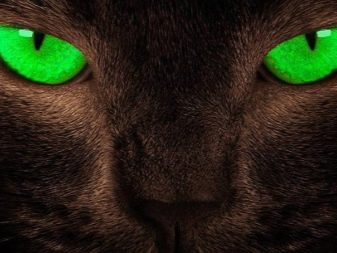
Observation sector
Due to the structure of the eyes, it is almost impossible to guide the cat. For another couple of seconds, she could bask in the sun, and after a moment she was able to jump sharply and grab the prey. Agility is explained by the angle of view, which is much greater in comparison with a person. It is due to him that the animal can see what is happening around. The shape of the pupil in cats can change, depending on the strength of the luminous flux. It's amazing that it can change its width.
The animal perceives the world with two eyes, due to its special structure, the cat can easily move them relative to the visual axis. Each of her eyes sees 45% of the picture. The cornea is distinguished by a convexity, due to which the coverage can reach 200 degrees versus 180 degrees in the human eye. The outlines of vertical pupils can change almost instantly, which occurs under the influence of external stimuli, so the pupil can be not only round, but even slit-like. The latitude of angular vision in cats is greater than that of humans.
Making eye movements by changing the visual axis is a feature that explains the reason why a dormant animal can grab a mouse running by with lightning speed. Cats follow flies and other flying insects with about the same ease.
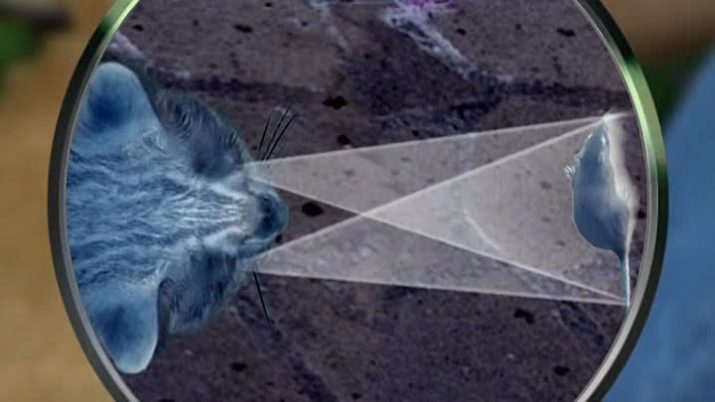
Size matters
There are conflicting opinions about the size of objects that a cat sees. Someone is sure that large objects located close, the cat sees poorly. At the same time, it is emphasized that if the object is motionless, vision is even worse. However, one can argue here: a cat without fear jumps on boxes, cabinets and even a person, dexterously climbing over it. If she saw only silhouettes and outlines, she would hardly be able to move with great ease and grace.
Most likely, breeders who adore cats have noticed more than once that pussies are more responsive to movement. Placing the animal in front of him, the person blinked, and the cat immediately caught this movement, despite the fact that the person's eyes were very close to the eyes of the pet. One could say that the animal responds to the air flow more than to the eyes. However, if you do not blink, but look with your eyes to the right and to the left, there are no air currents, but the cat at that moment marks the movement; what is happening is literally before his eyes. At the same time, he does not move back, does not squint, does not try to focus, which means that he has no vision problems. He instantly notices movement: what the burning hunting eyes are talking about.
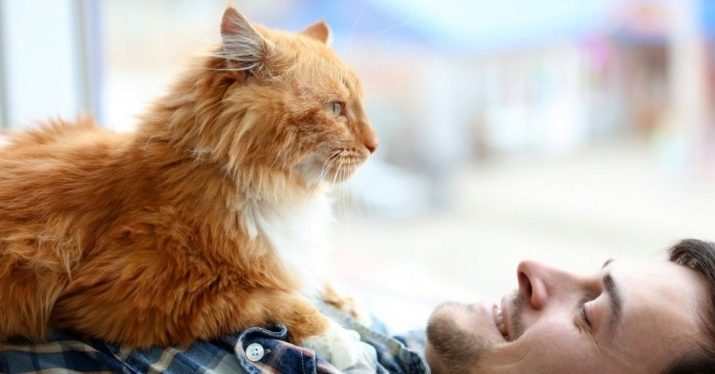
One can argue with the opinion that animals perceive different objects poorly on the screen of a monitor or smartphone. If you monitor the pets that are watching what is happening on the recording for a long time, then it proves: they can recognize their owners on the screens and follow the movements of other animals with curiosity. There is a known case when a cat, missing the deceased owner, watched for a long time the recording on the smartphone, where he was captured. Her eyes focused on him, she rubbed her face against the screen and purred.
As for the senses, then, of course, they add accuracy to the perception of the world, therefore, they help to determine the size. At the same time, the mustache gives clear information about the location, distance and size of various objects. Together with them, vision is a survival mechanism that increases hunting instincts.
The cat perfectly sees objects that are far from it, but as the distance increases, their outlines are gradually blurred.
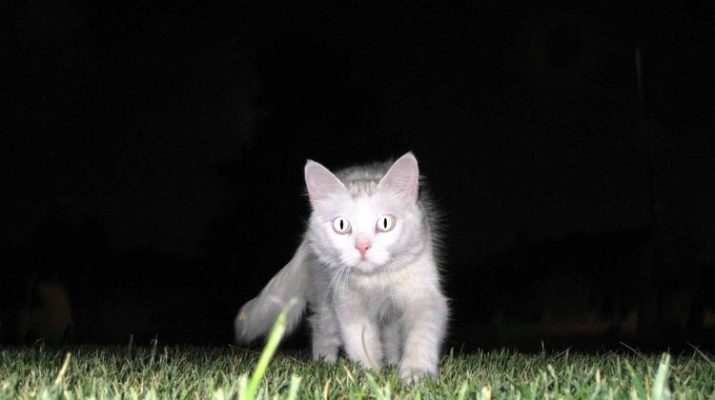
Perception of the world
Most likely, cat breeders were faced with the fact that their pets had to be literally dipped in food that was in front of the animals' noses. And the point here is not a bad sense of smell, but rather the peculiarities of vision. Cats may not clearly see objects in front of their noses. Individuals are farsighted, clearly distinguishing objects that are located from them in the range from 70 cm to 6 m. This distance allows you to calculate the length, height and strength of the jump. However, if you follow the behavior of some individuals, you can find that they with pleasure and high accuracy hit their "prey" with their paws, playing with the tablet. Considering that it is nearby, the size of the object is small, and a bright light is emanating from the screen, this may also indicate that not all individuals are farsighted.
Games for cats allow you to conduct a lot of experiments showing that pets react to different moving objects in different ways.
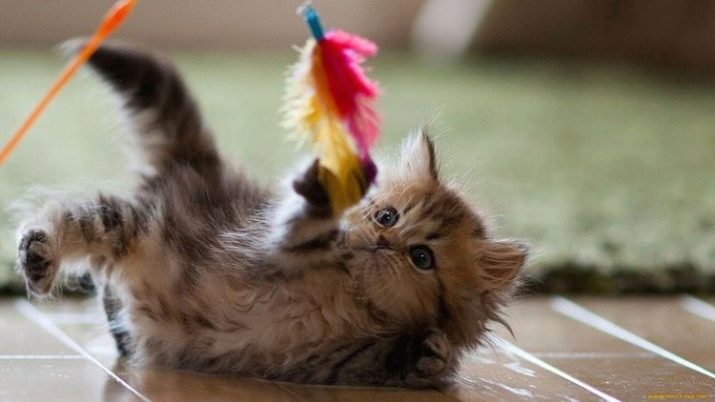
The opinion about how a cat sees a person is also contradictory. It is generally accepted that the animal does not see the owner clearly, but it does not focus its gaze, does not look closely at him or other objects, as people with low vision do, does not move back as far-sighted people. The animal moves rather confidently, it is unusual for it to be awkward when the owner or any large objects are nearby. The cat very accurately calculates the accuracy of the jump while on the windowsill. He can effortlessly jump through the window without touching the flower pots located nearby. It is unlikely that he would have succeeded if he saw only indistinct outlines of objects and relied solely on his vibrissae. Obviously, the eye rotation capabilities help with quick orientation, but focus is also important.
As for attributing magical properties to cats or the so-called sixth sense in relation to a person and the world around them, it is explained by the presence of vibrissae located on the cheeks, above the eyes, and also on the paws. It is they who give the animal information about the danger, but in no way the action of otherworldly forces or a special magical look.
Neither the large size of the eyes, nor their structure in any way affect the ability of the cat to look into other worlds. Cats see no other world, no dead people, no ghosts. They see us a little worse, but in general, their daytime vision is not so bad.
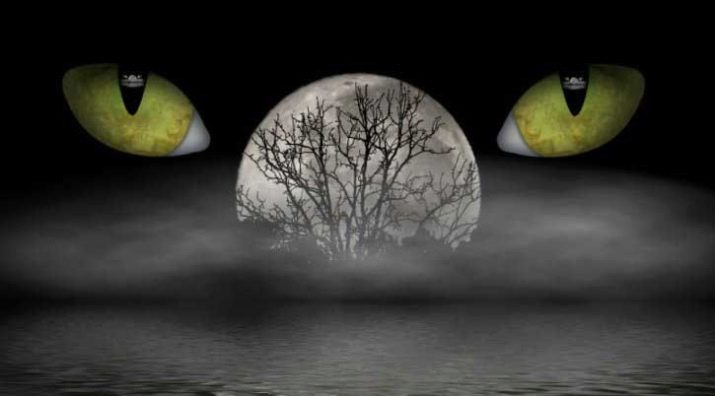
For how cats see the world, see the next video.
































